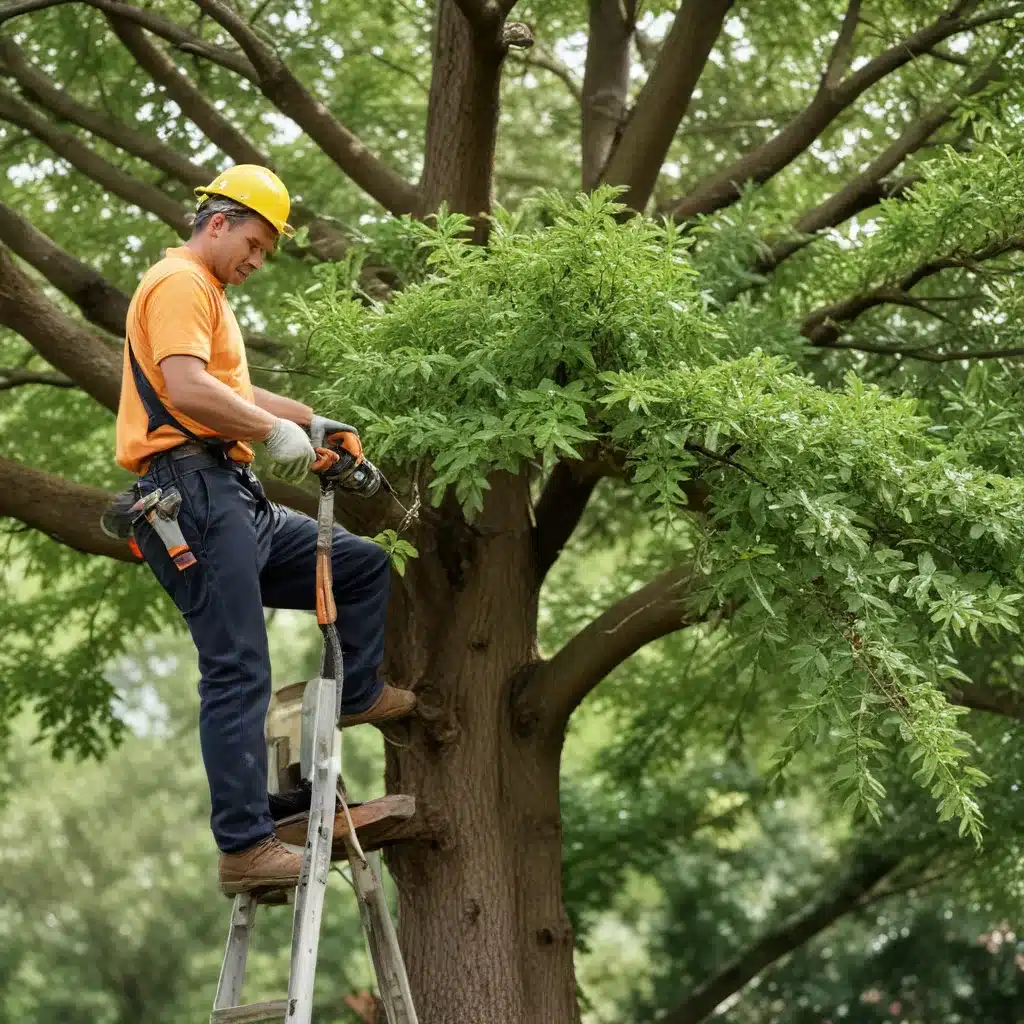
As a tree care specialist at TriCounty Tree Care, I understand the profound importance of proper fertilization for the long-term health and vitality of trees. Effective nutritional management is essential for supporting optimal growth, bolstering defenses against pests and diseases, and promoting the ecological advantages that trees provide. In this comprehensive guide, we will explore the fundamental principles of DIY tree fertilization, equipping you with the knowledge to cultivate thriving, resilient specimens in your landscape.
Tree Nutrition and Fertilization
Importance of Proper Fertilization
Maintaining adequate nutrient levels in the soil is a critical component of comprehensive tree care. Fertilizers supply essential macro- and micronutrients that enable trees to carry out crucial physiological processes, including photosynthesis, respiration, and cell division. Without sufficient nutrient availability, trees may exhibit stunted growth, discolored foliage, increased susceptibility to pests and pathogens, and diminished capacity to withstand environmental stressors.
Nutrient Requirements for Healthy Trees
Trees require 16 essential elements for optimal health and development. The primary macronutrients – nitrogen (N), phosphorus (P), and potassium (K) – are particularly crucial, playing pivotal roles in chlorophyll production, root growth, and overall vigor, respectively. Secondary macronutrients, such as calcium (Ca), magnesium (Mg), and sulfur (S), and micronutrients, including iron (Fe), boron (B), and zinc (Zn), also contribute to a tree’s nutritional balance.
Types of Tree Fertilizers
Fertilizers formulated for trees come in a variety of compositions, each designed to address specific nutrient deficiencies or support particular growth objectives. Synthetic fertilizers provide a more immediate nutrient boost, while organic fertilizers release nutrients gradually, fostering long-term soil fertility. Understanding the N-P-K ratio, as well as the presence of secondary and micronutrients, is crucial when selecting the appropriate fertilizer for your trees.
Tree Soil Management
Soil Testing and Analysis
The foundation of effective tree fertilization begins with understanding the unique characteristics of your soil. Soil testing and analysis, conducted by a reputable laboratory, can provide invaluable insights into the existing nutrient levels, pH, and overall composition of the growing medium. This information allows you to tailor your fertilization regimen to address any identified deficiencies or imbalances.
Soil Amendments and Conditioning
Based on the soil test results, you can then incorporate the necessary soil amendments, such as compost, lime, or gypsum, to optimize the growing conditions for your trees. Proper soil conditioning not only improves nutrient availability but also enhances water-holding capacity, aeration, and microbial activity – all of which contribute to overall tree health.
Improving Soil Drainage
Adequate soil drainage is equally important for tree growth and development. Poorly drained soils can lead to waterlogging, limiting oxygen availability and predisposing trees to root rot and other moisture-related issues. Strategies such as installing drainage systems, incorporating organic matter, or adjusting soil composition can help ensure optimal moisture management.
Timing and Application Techniques
Seasonal Considerations
The timing of fertilizer application is crucial, as trees have specific nutrient demands that fluctuate throughout the growing season. As a general rule, apply fertilizers in early spring to coincide with the tree’s natural growth cycle and ensure adequate nutrient availability during the active growing period. Avoid late-season applications, as they may stimulate tender new growth that is susceptible to winter damage.
Application Methods
Fertilizers can be applied using various techniques, each with its own advantages. Broadcast application, where the fertilizer is evenly distributed over the soil surface, is a common and effective method. Soil injection, which involves directly injecting the fertilizer into the root zone, can provide a more targeted nutrient delivery. Foliar feeding, although less common for trees, involves applying a diluted liquid fertilizer directly to the leaves, allowing for rapid nutrient absorption.
Dosage and Frequency
Determining the appropriate fertilizer dosage and application frequency is essential to prevent over- or under-fertilization, both of which can be detrimental to tree health. Follow the manufacturer’s recommendations, adjusting as needed based on factors such as tree size, age, and specific nutrient requirements. As a general guideline, apply fertilizers annually or biennially, monitoring the tree’s response and making adjustments as necessary.
Troubleshooting and Maintenance
Identifying Nutrient Deficiencies
Vigilant observation and monitoring are crucial for detecting and addressing any nutrient deficiencies in your trees. Characteristic symptoms, such as chlorosis (yellowing of leaves), stunted growth, or premature leaf drop, can provide clues about the specific nutrient(s) lacking in the soil. Consult with a tree care professional or refer to horticultural resources to accurately diagnose and address the issue.
Correcting Imbalances
Once a nutrient deficiency or imbalance has been identified, you can take targeted measures to rectify the problem. This may involve adjusting the fertilizer formulation, altering soil pH, or incorporating additional amendments to restore the necessary nutrient levels. Regularly monitoring the tree’s progress and making incremental changes can help ensure a successful outcome.
Long-term Care and Monitoring
Proper tree fertilization is an ongoing process that requires vigilance and adaptability. Regularly assess the overall health and vigor of your trees, making adjustments to your fertilization regimen as needed. Factors such as weather conditions, pests, or disease may necessitate modifications to your approach. By maintaining a proactive and responsive approach to tree nutrition, you can ensure the long-term vitality and ecological benefits of your trees.
At TriCounty Tree Care, we are committed to empowering homeowners and landscaping enthusiasts with the knowledge and skills to cultivate thriving, resilient trees. By mastering the fundamentals of proper fertilization, you can take an active role in promoting the health and longevity of the trees in your landscape. For additional guidance or personalized tree care services, please visit our website at TriCountyTreeCare.com.


